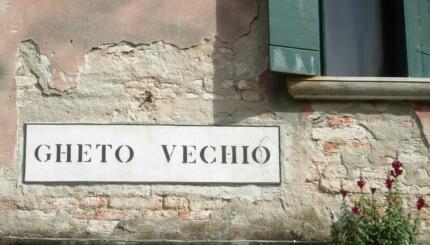In 1909, a group of Seattle Jewish women formed a whist and sewing club with dues of 25 cents per month. When they had accumulated $64, they offered to purchase a gift for their local synagogue. Because the rabbi knew that the women raised the money by playing cards, he refused the gift. Undaunted, the women started the Hebrew Ladies’ Free Loan Society of Seattle. Their thoughtfulness helped some of Seattle’s first Jewish entrepreneurs get started in business.
Hebrew free loan societies and aktsiyes, credit cooperatives, helped fuel Jewish immigrant economic success during the first third of the 20th century. Free loan societies charged no interest on their loans, while aktsiyes charged a small amount.
Before the 1930s, only a handful of banks loaned money to individuals or small businesses, especially those owned by immigrants. By one account, more than 85 percent of all Americans were excluded from access to commercial credit. More than any other immigrant group at the time, American Jews of Eastern European background worked in or owned small businesses — petty retail stores, small workshops, or peddlers’ pushcarts and wagons. Without access to the small loans provided by the free loan societies and aktsiyes, many of the businesses founded by and employing immigrant Jews would not have been created.
Minnie Low, founder of the Chicago Women’s Loan Association in 1897 observed, “In the Chicago Ghetto, along the Jefferson Street market, as well as throughout the entire district, there are comparatively few of the peddlers, vendors and keepers of small stands and shops who have not been given a start in life or helped over rugged places by loans from local organizations.”

Help us keep Jewish knowledge accessible to millions of people around the world.
Your donation to My Jewish Learning fuels endless journeys of Jewish discovery. With your help, My Jewish Learning can continue to provide nonstop opportunities for learning, connection and growth.
Historian Shelley Tenenbaum notes that Hebrew loan societies were “based on the biblical and Talmudic concept of providing the Jewish poor with interest-free loans.” Maimonides considered the interest-free loan among the higher forms of tzedakah because it respects the dignity of the borrower, provides him with a means of self-sufficiency, and does not saddle him with large debt. At their peak, more than 500 Jewish free loan societies operated throughout the United States. In 1920 alone, the New York Hebrew Free Loan Society distributed more than one million dollars in loans to Jewish-owned small businesses.
The societies restricted themselves to meeting the capital needs of small business enterprises, rather than other charitable requirements. As a Rhode Island newspaper reported, the Providence Hebrew Free Loan Society provided “means whereby the Jew can start in business for himself, or can meet the obligations of his business till it becomes established on a paying basis. This does not mean that a member of the race who is pressed for money for other purposes, because of illness or other emergency, is left without possibility of aid from his own people. There are other [Jewish philanthropic] associations which will help him.”
Unlike the free loan societies, aktsiyes worked on the same basis as credit unions: individual members deposited money into savings accounts and were paid interest. An aktsiye loaned a portion of the deposits to members who wanted to start enterprises. The first credit union in New York State was founded in 1911 by the Jewish Agricultural and Industrial Aid Society, which began as an informal aktsiye. By 1918, ten Jewish credit unions functioned in New York City alone. In 1927, Boston had 139 credit unions, three-quarters with explicitly Jewish names or a majority of whose directors were Jewish.
Edward A. Filene, a Boston Jewish department store owner and philanthropist, encouraged low-interest loans because, in his own words, he wanted to “fight the age old prejudice that all Jews were usurers.” Rabbi Schindler of Boston’s Temple Israel thought the free loan societies and aktsiyes were valuable because they proved that “there are Jews who are ready to serve, to help, to give, to lend, not for what they can get out of it but for the good they can thus do.”
Unlike formal credit unions, the states did not license or regulate aktsiyes. When state governments began bringing them under regulatory control in the 1920s, the institutions could no longer limit their lending to Jews. In the 1930s, banks made further inroads into the survival of Jewish free loans. Noting that Jewish credit cooperatives had default rates of less than one percent despite the Depression, commercial banks created personal loan departments to provide individuals and small businesses with larger loans than the free loan societies could risk. By the late 1940s, personal credit departments were common in banks. With some exceptions, Jews obtained access to this source of credit on the same basis as others.
By the 1960s, the surviving Hebrew free loan societies sought new avenues for distributing their funds, such as interest-free loans to Jewish college students. All now lend to Jews and non-Jews alike. Some have found new life in providing loans to Russian Jewish immigrants. While Jewish-owned small businesses no longer have difficulty obtaining commercial credit, the surviving free loan societies continue to perform the mitzvah for which they were created.
Chapters in American Jewish History are provided by the American Jewish Historical Society, collecting, preserving, fostering scholarship and providing access to the continuity of Jewish life in America for more than 350 years (and counting). Visit www.ajhs.org.



